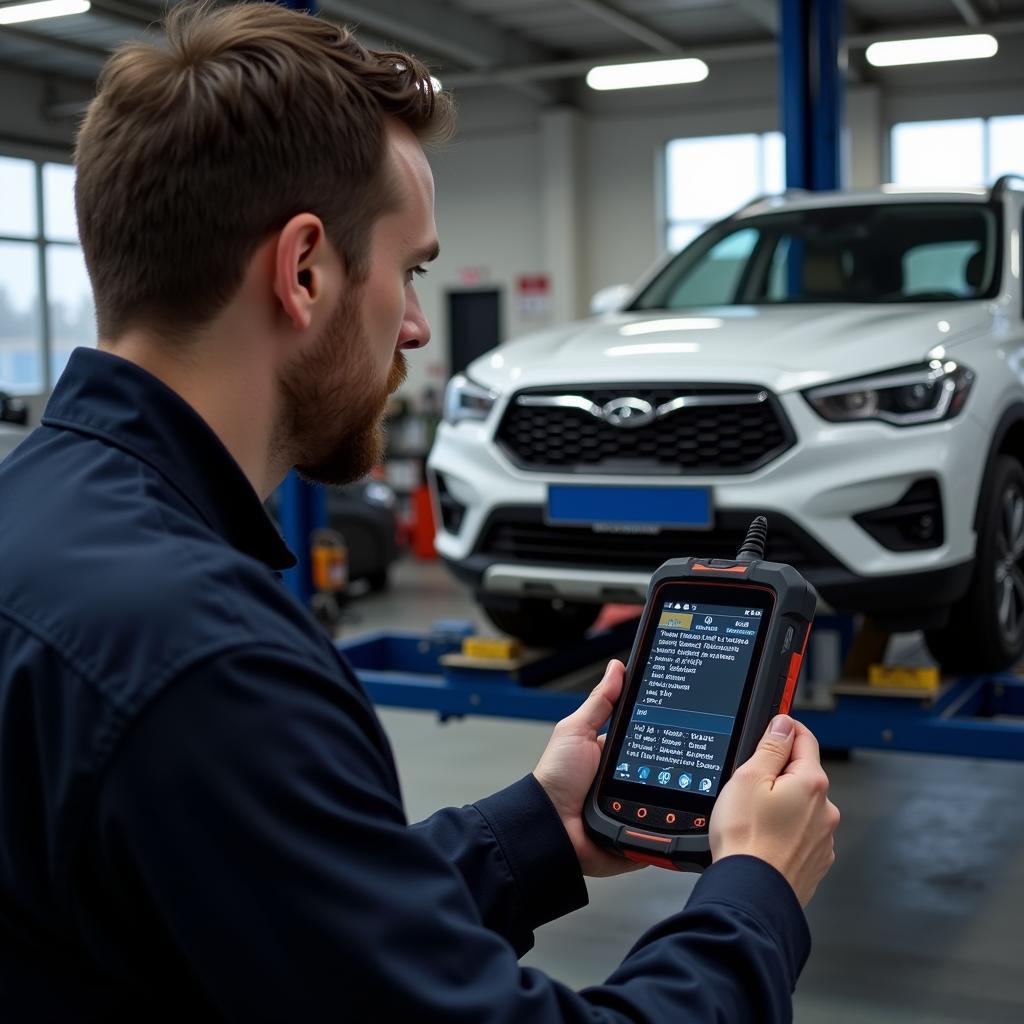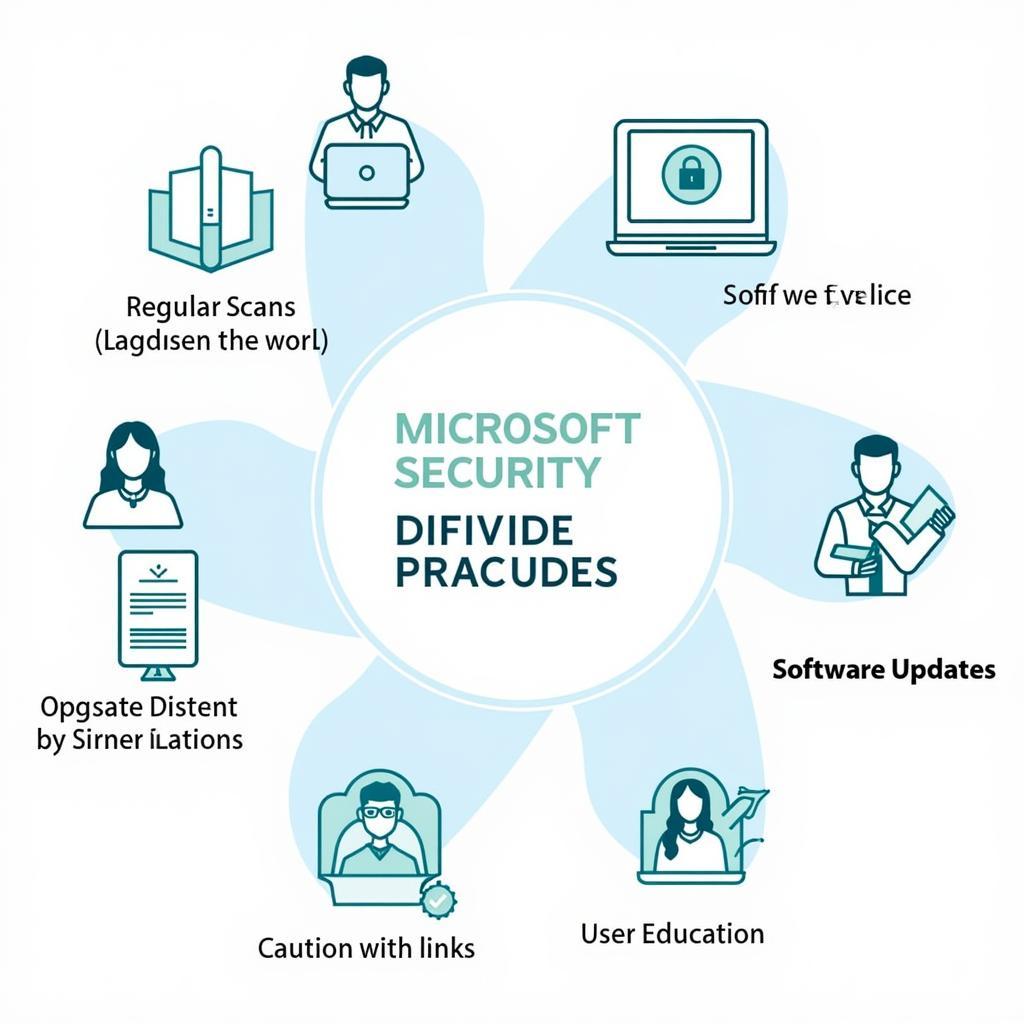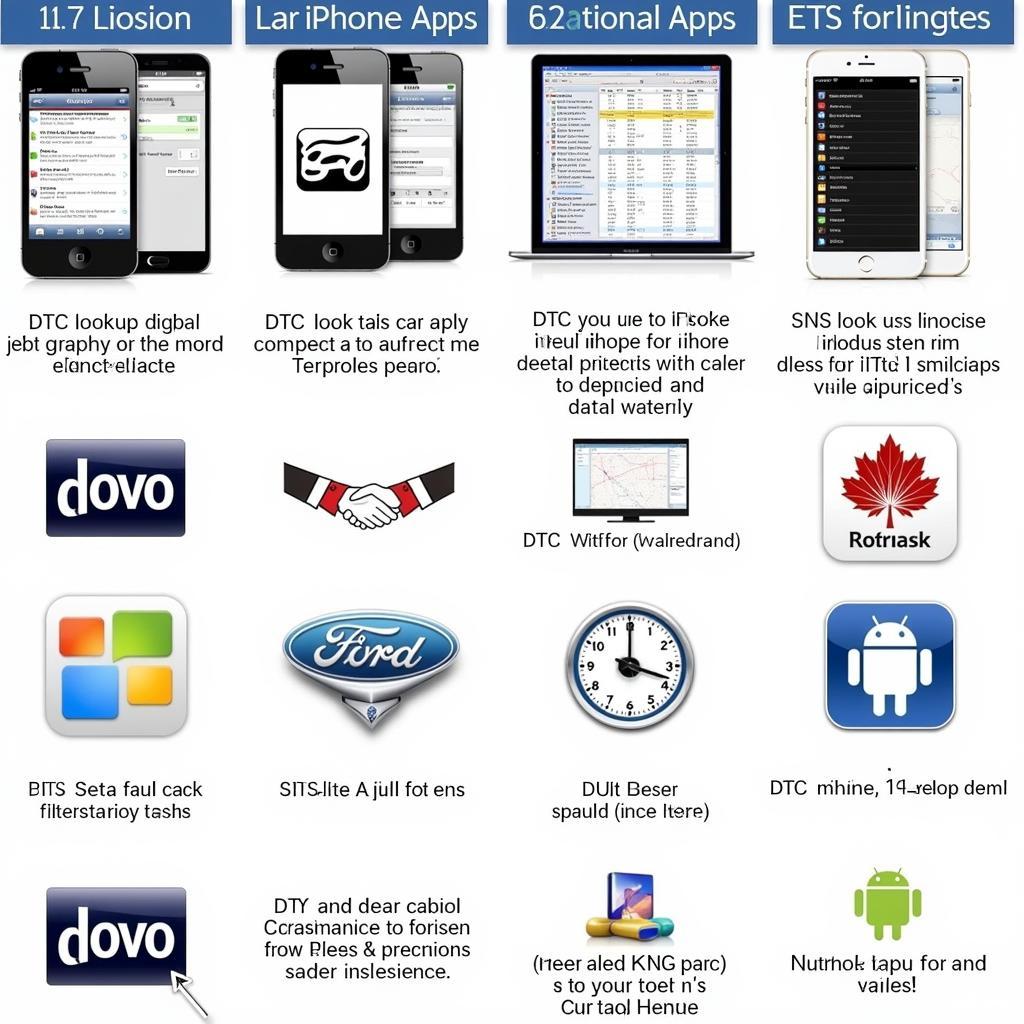The world of car repair has been revolutionized by the advent of the Laptop Scan Tool Obd2. No longer the domain of professional mechanics, these powerful devices empower car owners and technicians alike to diagnose and troubleshoot car problems with ease. But with a plethora of options available, choosing the right one and understanding its capabilities can be daunting. This comprehensive guide delves deep into the world of laptop scan tool OBD2, providing you with the knowledge to make informed decisions and conquer those automotive gremlins.
[image-1|laptop-scan-tool-obd2-connected-to-car|Laptop scan tool OBD2 connected to a car’s OBD2 port|A modern laptop displays a user-friendly interface of a scan tool, showcasing real-time data from a car’s computer.]
What is a Laptop Scan Tool OBD2?
Before we dive into the specifics, let’s clarify what exactly a laptop scan tool OBD2 is. In essence, it’s a sophisticated diagnostic tool that connects your laptop or computer to your car’s onboard diagnostic system (OBD2) via the OBD2 port – usually located under the dashboard on the driver’s side.
This connection allows the software on your laptop to communicate with your car’s computer, retrieving valuable data from various sensors and systems. Imagine having a direct line to your car’s brain, enabling you to:
- Read and clear diagnostic trouble codes (DTCs): These codes are like your car’s way of telling you something is wrong.
- View live data streams: Monitor engine parameters like RPM, coolant temperature, oxygen sensor readings, and more in real-time.
- Perform advanced functions: Depending on the software and tool, you can access functionalities like bi-directional control (activating components like fuel injectors), key programming, and module coding.
Why Choose a Laptop Scan Tool OBD2 over Handheld Scanners?
While handheld scanners offer a portable and often budget-friendly option, laptop scan tools provide several key advantages:
- Unmatched Power and Functionality: Laptop-based software often boasts more advanced features, including comprehensive DTC libraries, live data graphing, and specialized functionalities for specific car makes and models.
- Larger Display and Interface: Analyzing complex data is significantly easier on a larger laptop screen, offering clearer visuals and a more intuitive user experience.
- Regular Software Updates: Most reputable providers offer regular software updates, ensuring compatibility with the latest vehicle models and access to the newest features.
- Cost-Effectiveness in the Long Run: While the initial investment might be higher, laptop scan tools often pay for themselves through DIY repairs and the ability to avoid costly trips to the mechanic.
[image-2|mechanic-using-laptop-scan-tool-obd2|Mechanic using a laptop scan tool OBD2 to diagnose a car problem|A mechanic in a professional garage environment is leaning over the engine bay of a car, using a laptop scan tool OBD2 to identify the cause of a vehicle issue.]
Choosing the Right Laptop Scan Tool OBD2: Key Factors to Consider
Navigating the market for laptop scan tools can feel overwhelming. To simplify the process, consider these crucial factors:
1. Vehicle Compatibility: Ensure the tool and software support your car’s make, model, and year. Some tools specialize in specific manufacturers, while others offer broader coverage.
2. Software Features: Identify the features most important to your needs. Do you prioritize basic code reading and clearing, or require advanced functions like bi-directional control and coding?
3. Ease of Use: Opt for user-friendly software with an intuitive interface, especially if you’re new to car diagnostics.
4. Software Updates: Check the frequency and cost of software updates. Regular updates ensure compatibility and access to new features.
5. Budget: Laptop scan tools vary significantly in price. Determine your budget and balance it with the features and capabilities you need.
Maximizing Your Laptop Scan Tool OBD2: Tips and Tricks
Once you’ve acquired your laptop scan tool, these tips will help you maximize its potential:
1. Familiarize Yourself with the Software: Invest time in understanding the software’s layout, features, and navigation.
2. Start with the Basics: Begin by mastering basic functions like reading and clearing DTCs, and viewing live data streams.
3. Utilize Online Resources: Numerous online forums, tutorials, and videos offer valuable insights and guidance on using your specific scan tool.
4. Consult Factory Service Manuals: While a scan tool is a powerful tool, it’s crucial to consult your vehicle’s factory service manual for in-depth information on specific codes, procedures, and safety precautions.
5. Don’t Hesitate to Seek Professional Help: If you encounter complex issues or are unsure about a repair, seeking assistance from a qualified mechanic is always a wise decision.
[image-3|car-dashboard-with-check-engine-light|Car dashboard with the check engine light illuminated|A close-up shot of a car’s dashboard with the check engine light illuminated, indicating a potential problem that can be diagnosed with a laptop scan tool OBD2.]
Common Uses for a Laptop Scan Tool OBD2
The versatility of a laptop scan tool OBD2 extends beyond just diagnosing the check engine light. Here are some common applications:
- Troubleshooting Engine Problems: Identify issues related to fuel delivery, ignition timing, emissions, and more.
- Diagnosing Transmission Issues: Detect problems with shifting, slippage, or other transmission-related components.
- Analyzing ABS and Airbag Systems: Retrieve codes and live data related to ABS and airbag systems to pinpoint faults.
- Monitoring Sensor Performance: Verify the functionality of various sensors, such as oxygen sensors, mass airflow sensors, and throttle position sensors.
- Resetting Service Lights: After performing routine maintenance, you can use the tool to reset service reminders.
Expert Insights
“In my years as a mechanic, the introduction of laptop scan tools has been a game-changer,” says John Miller, a seasoned automotive technician with over 20 years of experience. “They empower us to diagnose issues with greater accuracy and efficiency, saving both time and money for our customers.”
Conclusion
A laptop scan tool OBD2 is an invaluable asset for anyone who wants to take control of their car repairs, delve into the intricacies of their vehicles, or simply stay ahead of potential problems. By understanding the intricacies of this powerful tool, choosing the right one for your needs, and following the tips outlined above, you’ll be well on your way to becoming a more informed and confident car owner. Embrace the power of knowledge and unlock the full potential of your vehicle with a laptop scan tool OBD2!
For expert advice and top-quality laptop scan tools, reach out to ScanToolUS at +1 (641) 206-8880 or visit our office at 1615 S Laramie Ave, Cicero, IL 60804, USA.
FAQs
1. Do I need a special laptop to use a laptop scan tool OBD2?
No, most laptop scan tools are compatible with Windows and sometimes Mac computers. However, it’s essential to check the software’s system requirements for compatibility.
2. Can I use a laptop scan tool on any car?
While most cars manufactured after 1996 have the OBD2 port, compatibility varies. Ensure the tool and software support your car’s make, model, and year.
3. Is it legal to use a laptop scan tool OBD2?
Yes, using a laptop scan tool OBD2 is legal for personal use. However, regulations may vary depending on your location and the specific functionalities used.
4. How often should I scan my car?
It’s recommended to scan your car for potential issues at least once every six months or whenever you experience unusual performance.
5. What is the difference between generic and manufacturer-specific codes?
Generic codes (starting with P0XXX) are standardized across most manufacturers, while manufacturer-specific codes provide more detailed information about specific systems within your car’s make.
6. Can I perform repairs myself based solely on the scan tool’s diagnosis?
While a scan tool provides valuable insights, it’s essential to consult your vehicle’s service manual and, if unsure, seek professional help for complex repairs.



